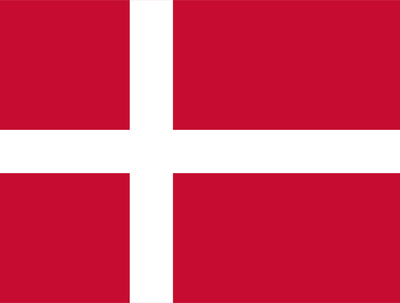How to read charts
This is a general guide on how to work from the charts you will find in our Knitting for Olive patterns. It uses illustrations and examples from several different patterns. If you have a question regarding a specific pattern, please feel free to contact us at support@knittingforolive.dk
Where do I start?
When you work from charts, you always start at the bottom right corner, with the first stitch of Row 1.
How do I work from a chart when working in the round?
When you work in the round, you always read the chart from the bottom up and from right to left, because you only work from the right side of the work. You begin with Round 1 and Stitch 1 of the chart and work as indicated from right to left to the end of the round. On the next round, you start with Stitch 1 and Round 2 of the chart and work as indicated from right to left, and so on.

How do I work from a chart when working flat?
When working back and forth, you read the chart from the bottom up, from right to left on the right side of the work (odd numbered rows) and from left to right on the wrong side of the work (even numbered rows). You start with Row 1 and Stitch 1 and work from right to left until the end of the row. You then turn the work and work Row 2 of the chart from left to right.

How do I work the grey section indicating repeats?
The grey section in some of our charts indicates repeats. As the number of stitches change, you incrementally work additional or fewer repeats, as required. While working one round of the chart, you start with the stitches from the white section on the right side of the chart and work these one time. Then you work and repeat the grey section as many times as possible and end by working the last white section on the left side of the chart one time.
For example:
Row 1 of the chart below is worked over 39 stitches.
You begin by working the first 13 stitches to the right side of the grey section. You then work the 12 stitches of the grey section twice and then work the last 2 stitches to the left of the grey section:
13+12+12+2 = 39 stitches

Why are there fewer/more stitches on a certain chart row than what are currently on my needles?
The chart shows how many stitches there will be AFTER a certain row has been worked. You can therefore sometimes find that the number of stitches that are on your needles and what is indicated in the chart could be different before you have worked that chart row.
For example:

Row 1 of the chart above is worked over 17 stitches but if you count the number of stitches on Row 1 of the chart, you will get 19 stitches. That is because the increases you will work on Row 1 are already showing up as stitches on that row. The chart shows 6 stitches on the right side of the grey section but 2 of these stitches are increases, and should not be counted when you check your stitch count against the chart: 6-2 = 4.
The chart also shows 12 stitches in the grey section - 2 of these are increases and should therefore, as noted above, not be counted when you check your stitch count against the chart. However, the chart also shows a decrease of 2 stitches in this section on this row. So, since the same number of stitches are increased as are decreased, you have 12 stitches here both before and after you have worked that particular row.
To the left of the grey section, the chart shows 1 stitch, and since there are no increases or decreases, there is still just 1 stitch here.
That means that Row 1 is worked over 17 stitches (4+12+1=17), and when you are done working that row, you will have 19 stitches (6+12+1=19).
The same principle applies if there are repeats in the chart:

In the chart above, Row 1 is now worked over 29 stitches. If you do not take the increases or decreases to be worked into account, this chart row is worked over 4+12+1 stitches, and will therefore be worked like this:
Work the white section on the right side 1 time (over 4 stitches), repeat the grey section 2 times (over 2x12 stitches), and then work the white section on the left 1 time (over 1 stitch): 4+12+12+1= 29 stitches. When you are done working that row, you have 31 stitches (6+12+12+1=31).
Why does my knitting not look like the chart?
Charts are a visual representation on how to work row by row. Although they will give you some idea of how your project will look in the end, it does not mean that your chart and your project will always look exactly the same:

The purl stitches inside the black circle above look like they are slightly staggered but when you work the chart, you will see that the purl stitches actually end up on top of each other. So, here in this chart, you actually knit the knit stitches and purl the purl stitches from the previous row. The staggering appears only in the chart and is a result of the increases that are also displayed in the chart.
So, when you work the chart, it’s important that you do not use the previous chart row to help keep track of where you are but instead always check against and count using the chart row you are actually working.
How do I work the black squares in the chart?
In charts with increases or decreases, there will sometimes be black squares:

When a stitch from a previous row becomes black on the next chart row, it means that it no longer exists. You therefore just skip that square while reading the chart and move on to the next stitch.
Basic chart rules:
- Always start from the bottom right corner and work Row 1 of the chart from right to left.
- If you are working in the round, you will work from right to left on all rounds of the chart.
- If you are working flat, you will work from right to left on odd numbered rows of the chart, and from left to right on even numbered rows of the chart.
- If there is a grey section indicating repeats in the chart, it means that you start with the stitches from the white section on the right side of the chart and work these one time. Then you work and repeat the grey section as many times as possible and end by working the last white section on the left side of the chart one time.
- The number of stitches you can count on a chart row is the stitch count AFTER you have worked that row. If you want to check how many stitches that row is worked over BEFORE you start, remember to take decreases and increases into account.
- You can’t always tell from just looking at the chart how it will look knitted up. Stitches that look staggered in the chart might end up on top of each other in your work. The best way to keep track of where you are is to use the chart row you are on now, not any of the previous chart rows.


